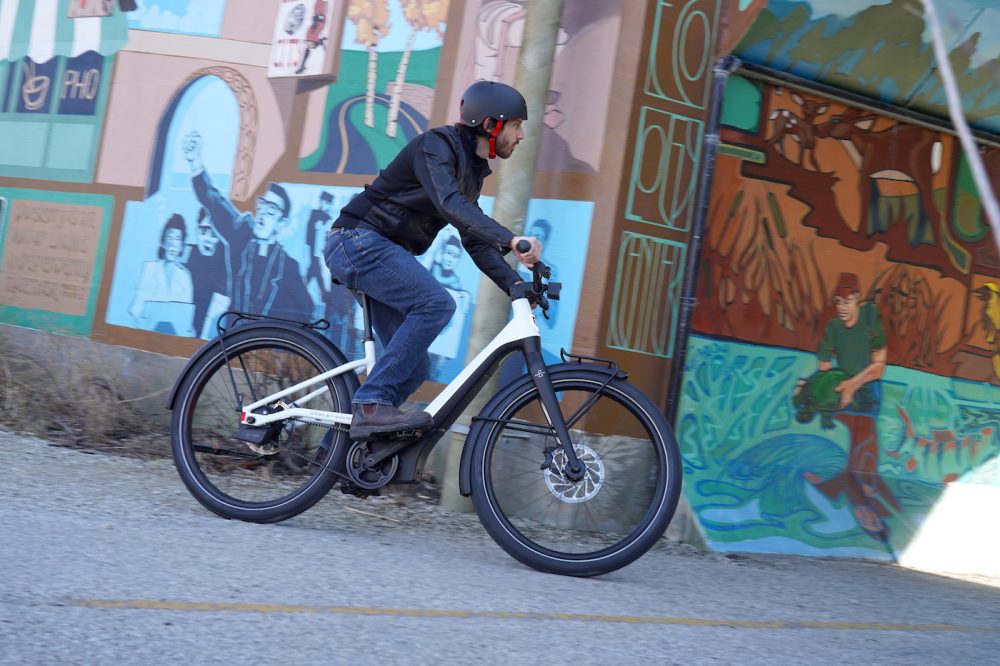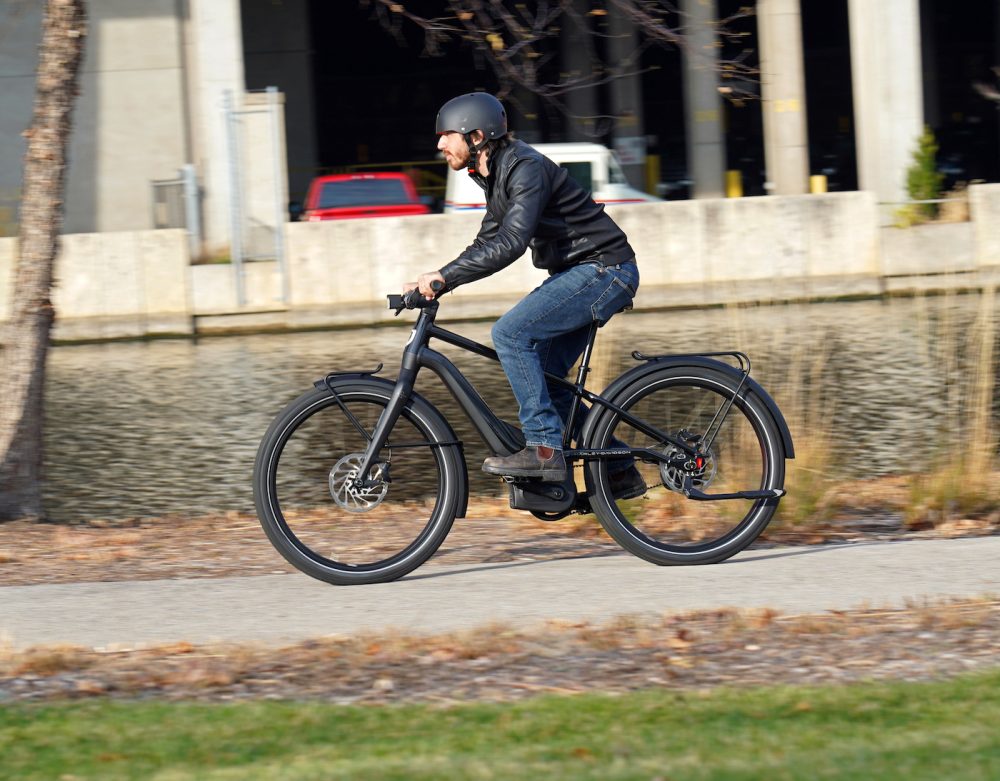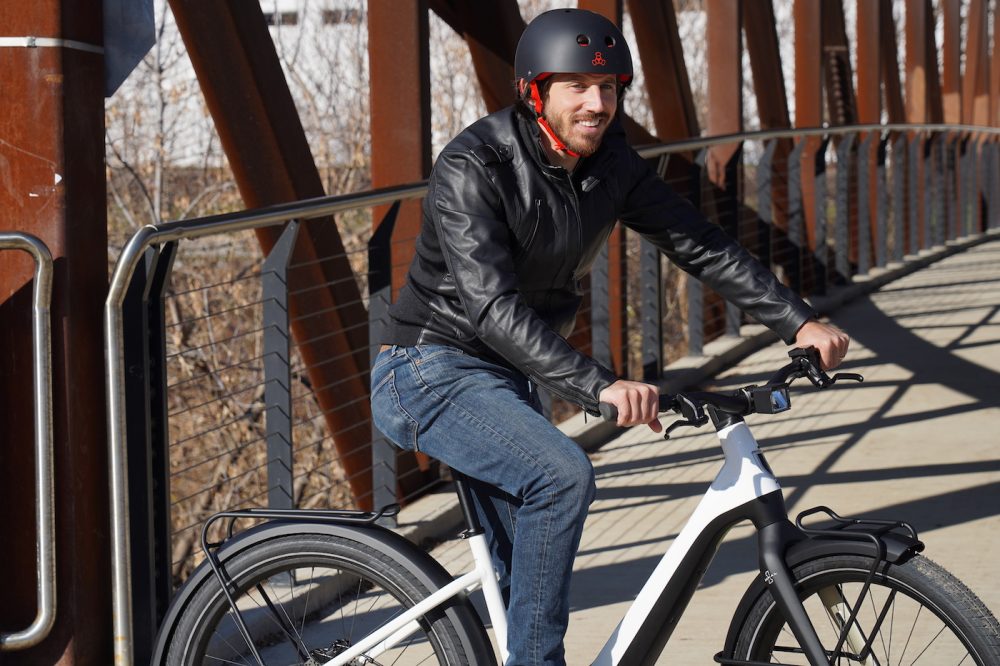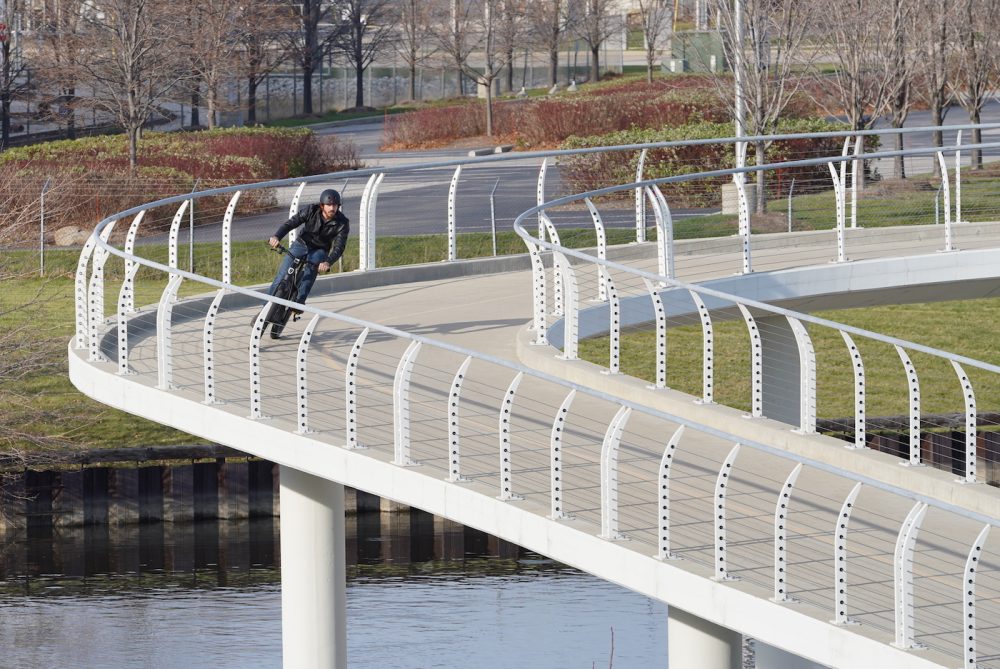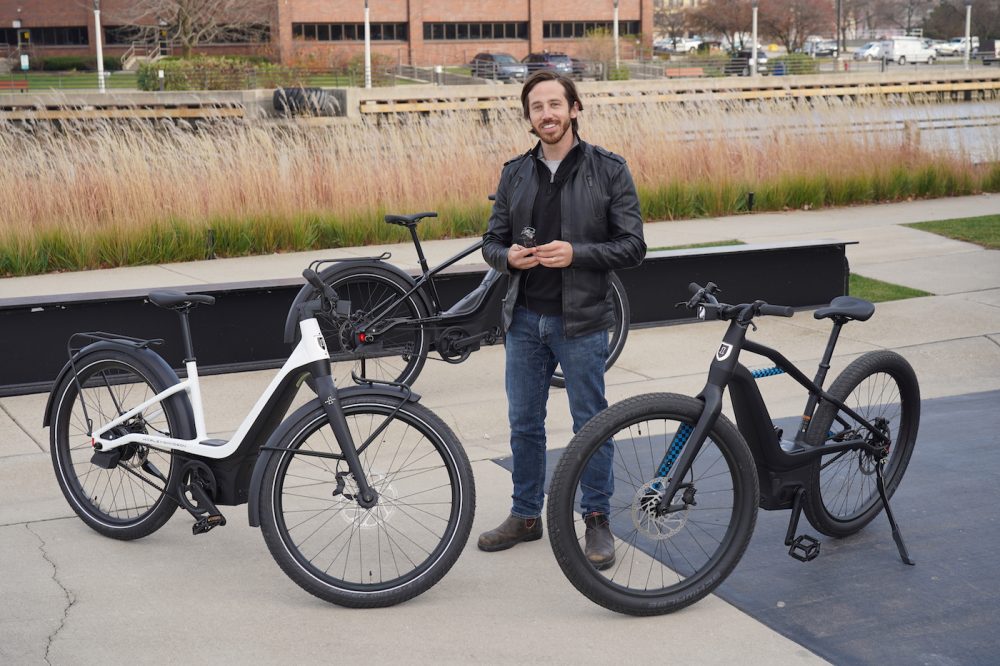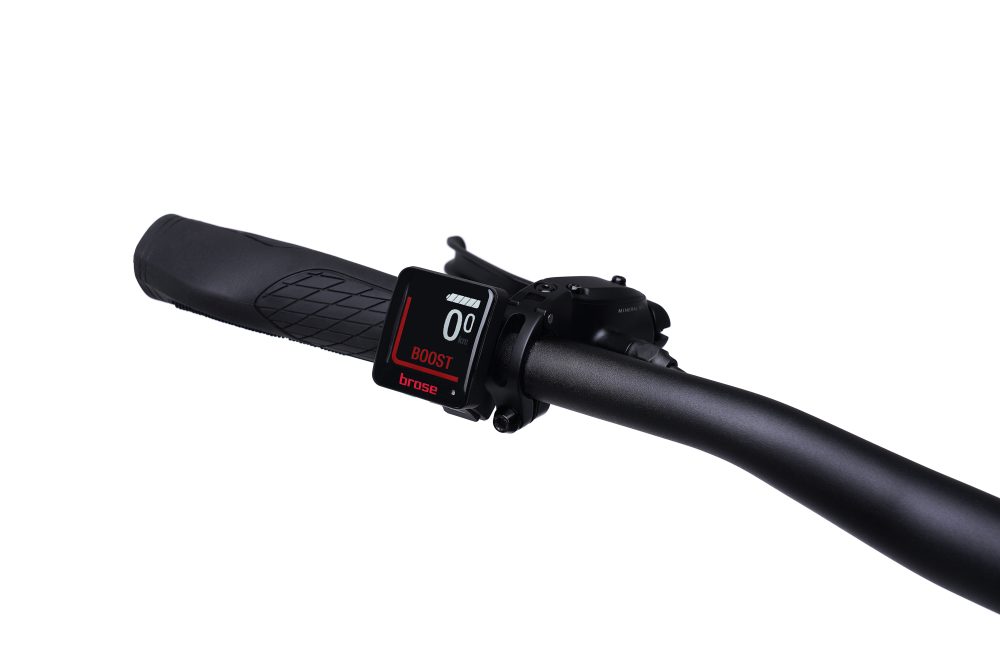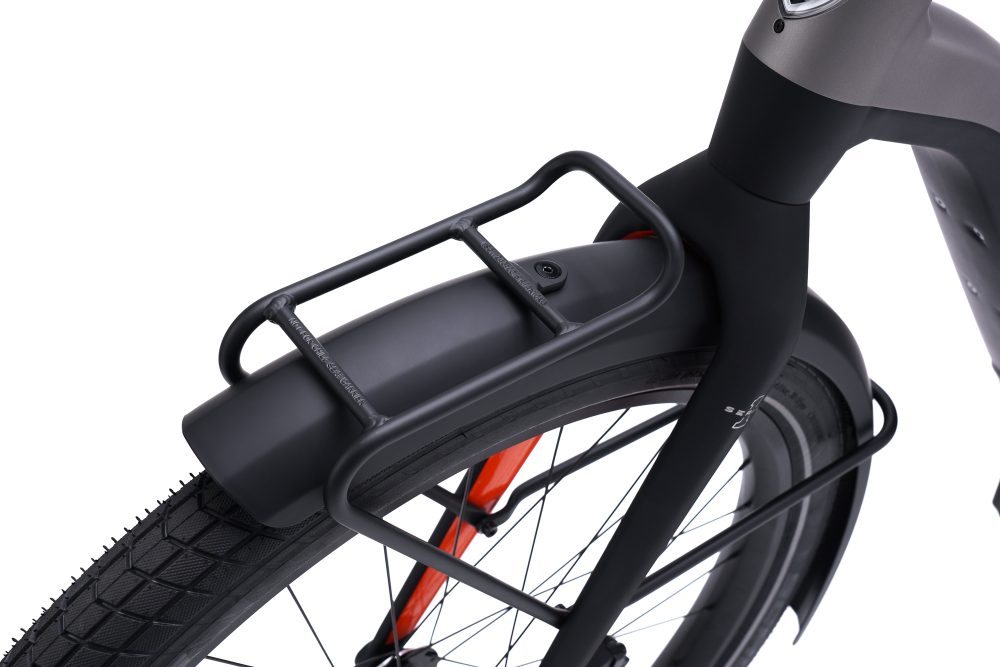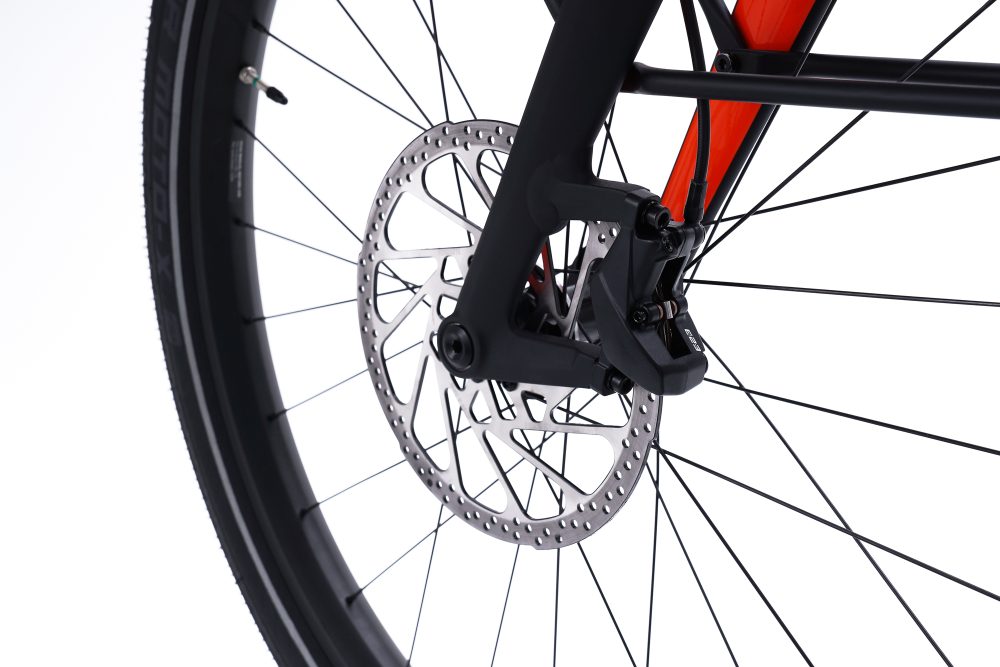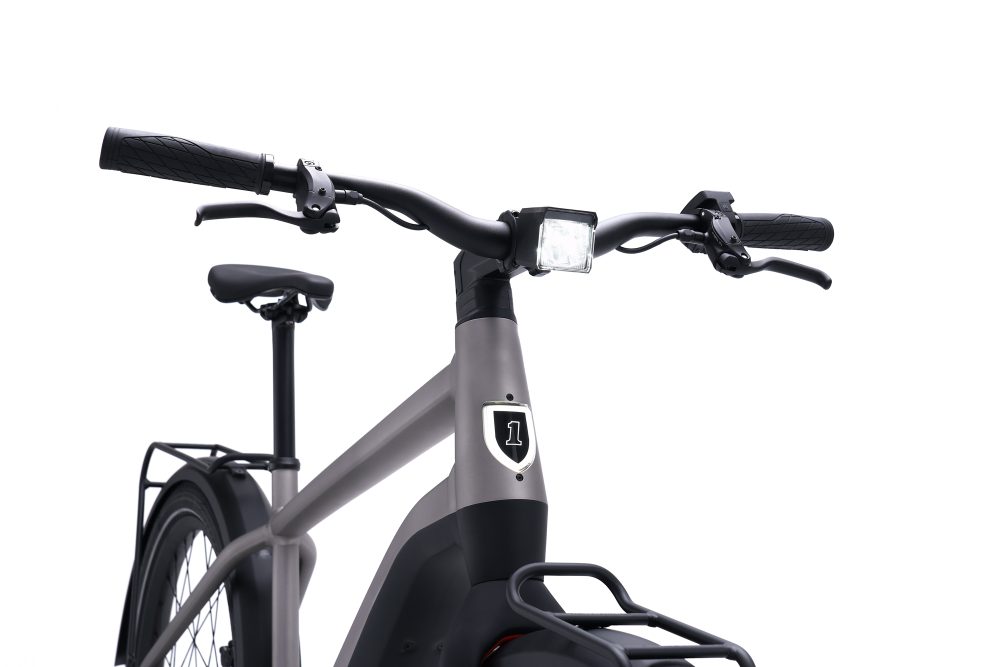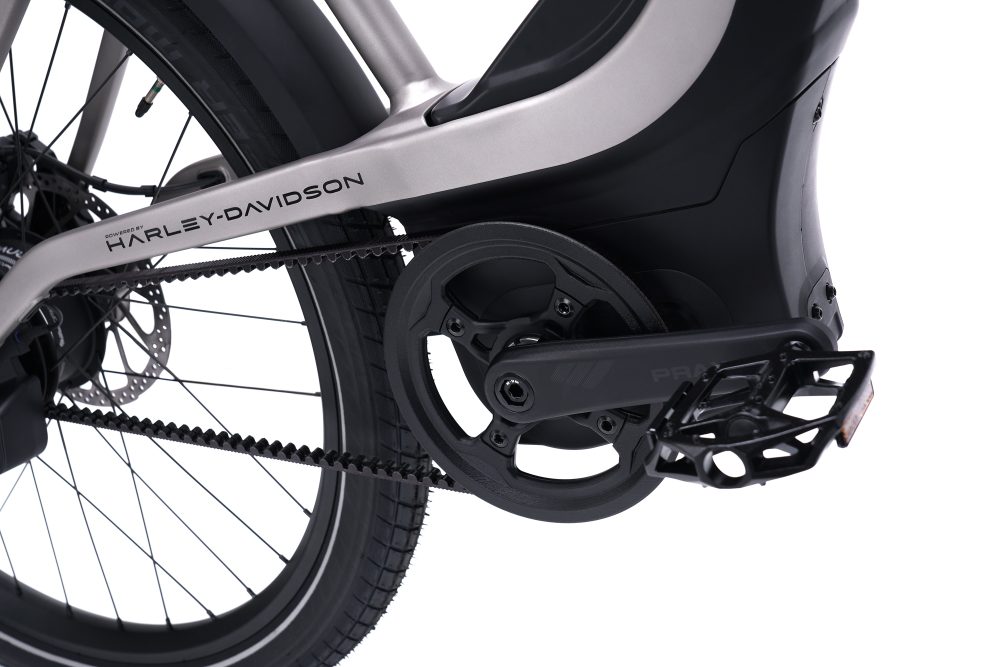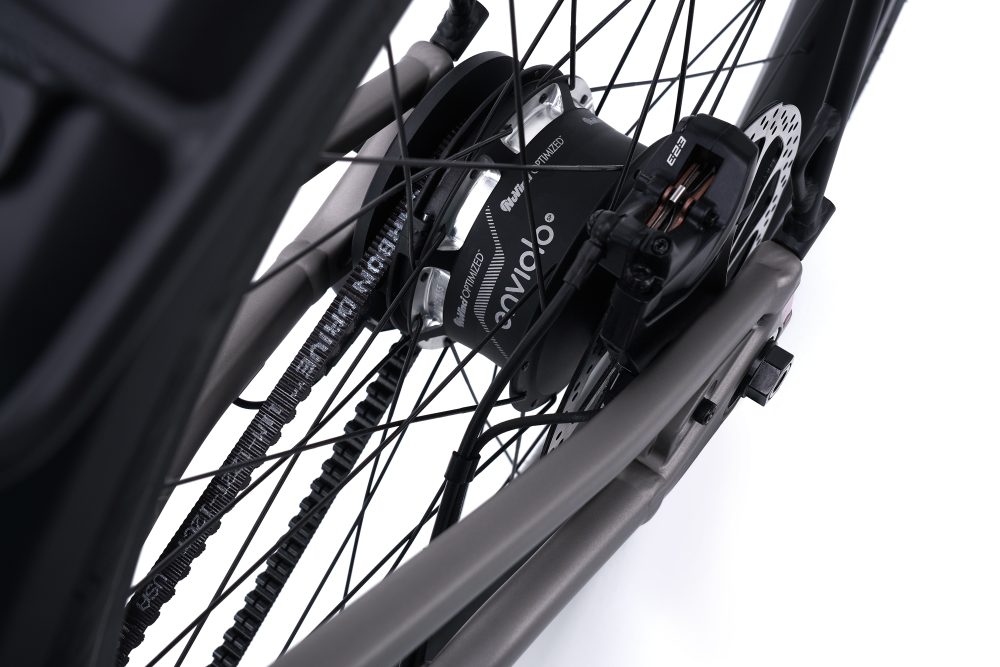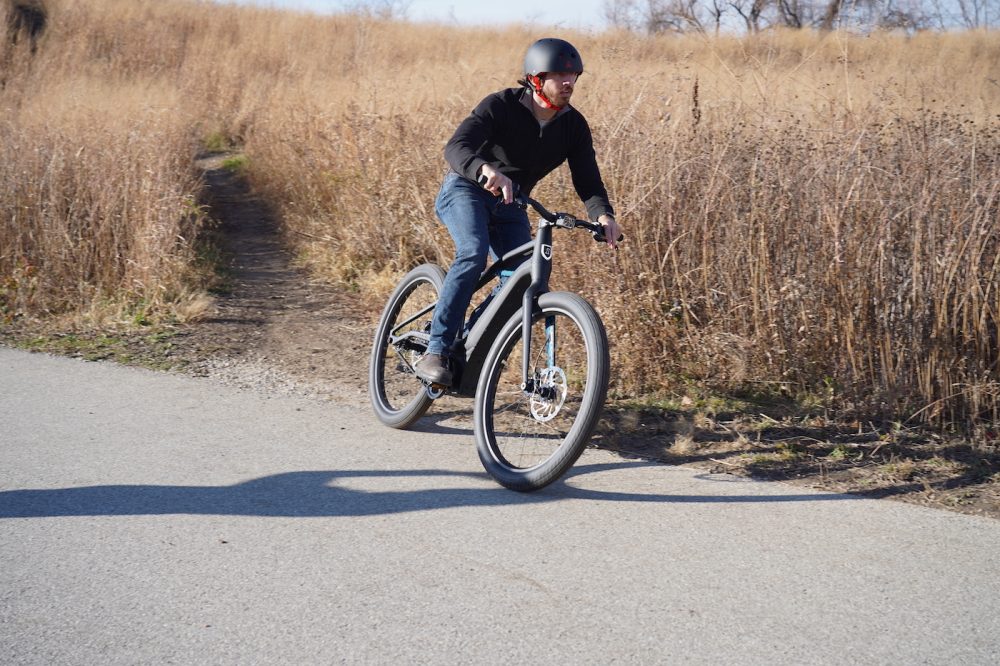
Don’t call them the Harley-Davidson electric bicycles anymore! Despite spending their first two years of development as an H-D project, the e-bikes were spun off into their own company known as Serial 1 last month.
Today Serial 1 is releasing the full details and taking pre-orders for their new portfolio of “Powered by Harley-Davidson” e-bikes, including specs and pricing. And as an added treat, I got to take the first-ever test ride of the premium-level Serial 1 e-bikes to share with you below.
To be honest, I didn’t know what to expect when I went into this test ride last week and finally got to see the e-bikes in person.
I figured that e-bikes originally designed by Harley-Davidson would be pretty decent, though would also cost a pretty penny.
Ultimately, Serial 1 surprised me on both counts. In a good way.
Not only did these premium e-bikes exceed my expectations in terms of ride quality and performance, but they came in below the sky-high prices that I had feared.
Serial 1 electric bicycle test riding
Check out my video below showing my test rides on the new Serial 1 e-bikes, then keep reading for the full details on this fascinating story.
How we got from Harley-Davidson to Serial 1 (briefly)
For two years I’ve called these e-bike prototypes the “Harley-Davidson e-bikes,” for lack of a better term. But suddenly they aren’t Harleys anymore. Or are they?
In a nutshell, here’s what happened: Harley-Davidson was gearing up to release the e-bikes as planned for spring/summer of 2020, but then COVID-19 hit. The project fell into limbo as H-D, like most companies, was forced to revisit their five-year plan.
As the company tightened its belt, things initially looked dark for the project. But the dedicated team behind the bikes was able to secure their future and worked with H-D to spin off the new operation as a separate company, Serial 1 Cycle Company, with H-D as a large equity holder.
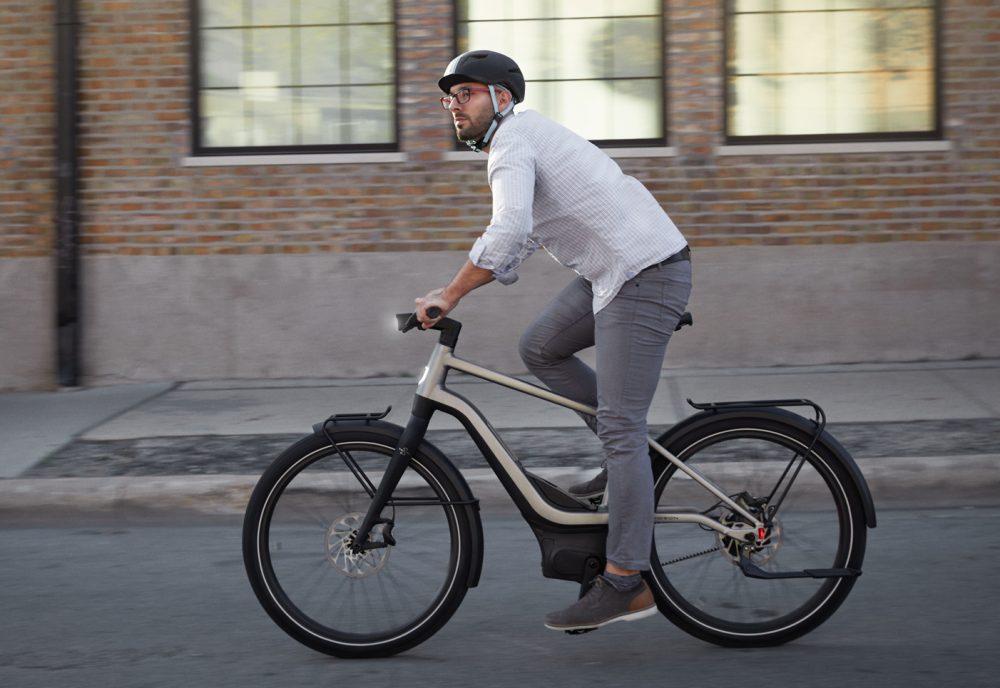
Serial 1 is now housed on the H-D campus in Milwaukee, sitting in the same building out back that once served as Harley’s race shop from the 1950s to early 2000s. Serial 1 may be a new startup (and one that the team jokes about now “working in their parent’s garage”), but they still get many of the benefits of having H-D as their “parents” on both the business and engineering fronts.
It’s a much longer and more complicated story than that, and one that I hope to tell soon in fascinating detail with all the dramatic twists and turns. But for now, that’s the nutshell.
Alright, let’s get to the bikes!
Serial 1 is unveiling their new e-bikes today, consisting of a pair of models: The Serial 1 MOSH/CTY and Serial 1 RUSH/CTY.
And the RUSH actually has three variations, so we’re looking at four unique e-bikes here.
The “/CTY” designator seems to imply that these urban e-bikes will be joined by non-urban e-bikes in the future, a guess further buoyed by the team’s tightlipped grins when I pushed further on the subject.
The MOSH platform is something of an urban playbike — robustly constructed while offering just a single speed to simplify the drivetrain and keep costs down.
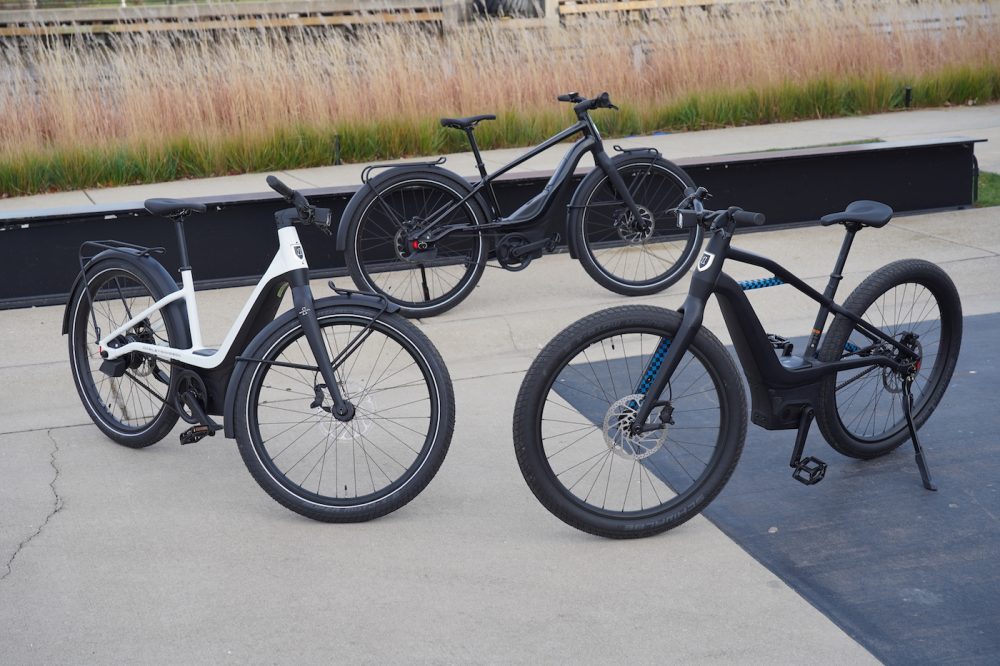
The RUSH platform uses the same powertrain but a different frame that is optimized for real-world commuting and leisure. It includes custom-designed racks and fenders, plus an automatic Enviolo NuVinci transmission that is a thing of beauty. Seriously. It’s an awesome transmission.
The bikes otherwise share many premium features. They all use a Gates Carbon Drive belt drive system instead of a chain. They are both powered by the latest Brose Drive S Mag mid-drive motor with smooth and ultra-quiet belt reduction. The mid-drive motor features 90 Nm of torque and four pedal assist levels with up to 400% assist in the most powerful level.
Technically that’s a “250W continuous” motor, but we all know that European e-bike power ratings are meaningless. They carry “250W” stickers to pass EU power limit laws, but true power output is often closer to 500-800W, depending on the model. I rode the Serial 1 MOSH/CTY single-speed e-bike up some very steep off-road trails and it rocketed me to the top. So, yeah… “250 watts, wink wink.”
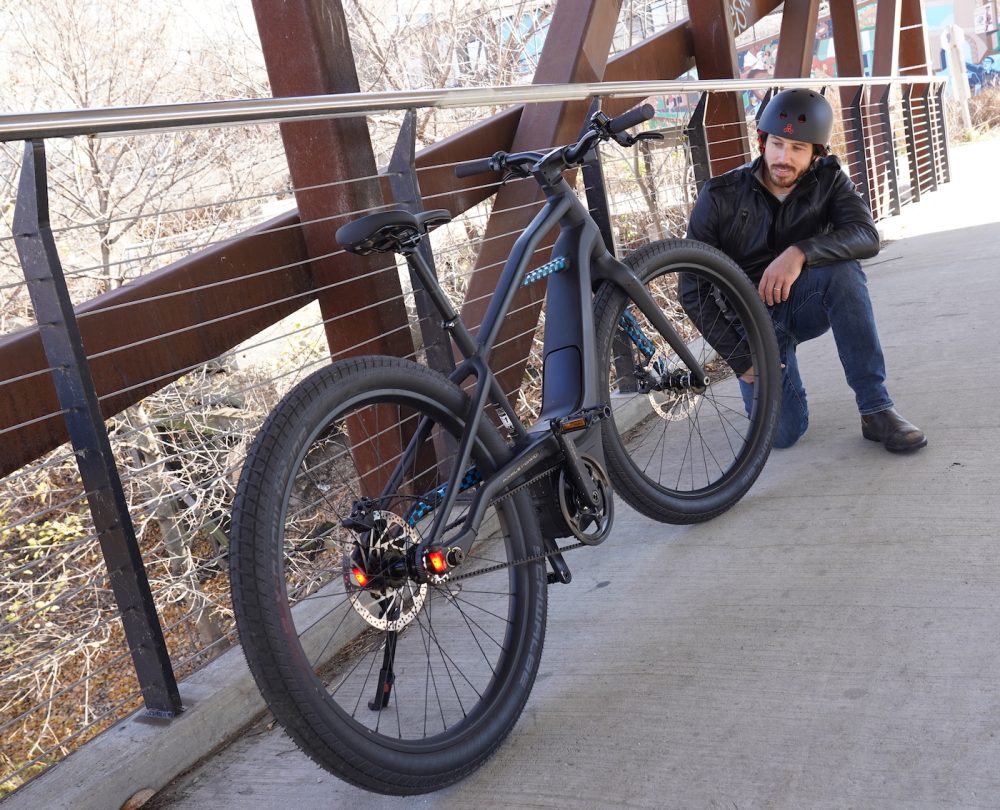
The e-bikes use lightweight hydroformed aluminum frames designed by Harley-Davidson relying on over a century of frame-building expertise. The four frame sizes are designed with a proper stair-step stack-and-reach geometry that ensures every rider gets the same handling even as the frame size changes.
The belt tensioning system, which is normally an eyesore on many frames, has been cleverly hidden in the rear triangle as well to reduce clutter and maintain a sleek appearance.
The LED lighting is integrated into the frame with tail lights embedded on both sides of the rear triangle (with brake lights triggered by a built-in accelerometer), a “be-seen” headlight integrated into the head tube, and a bright “seeing” light incorporated into the handlebar mount.
The team custom designed all the lights and put special emphasis on designing the powerful headlight’s reflector to ensure strong lighting across the entire vertical range, as opposed to most headlights that only provide their rated lumens in the center of the beam and fade quickly as the beam spreads out.
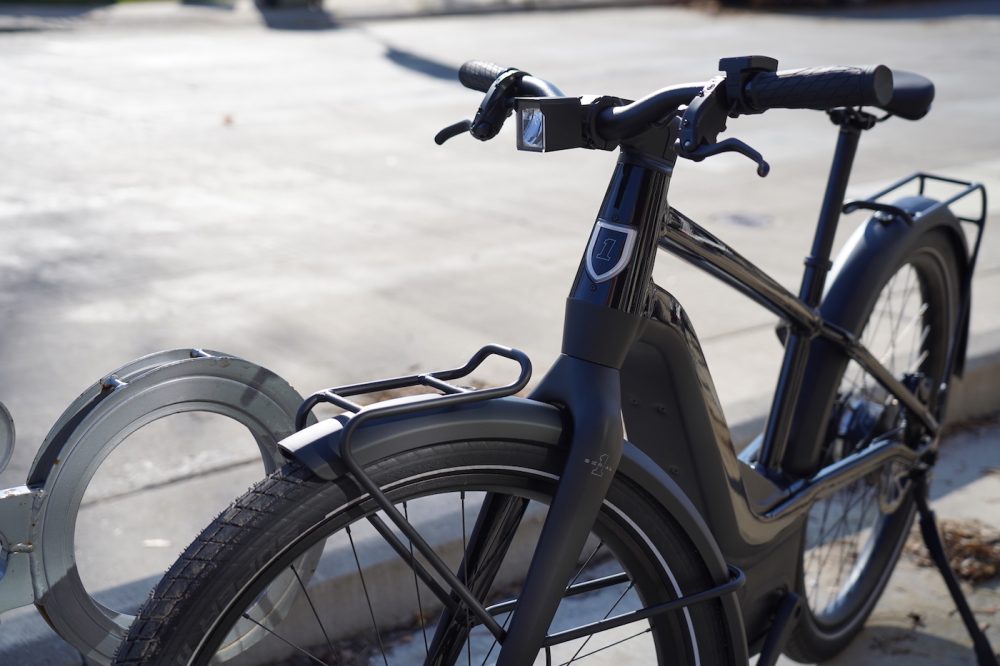
The same team that developed the battery for the Harley-Davidson LiveWire also developed the battery packs for the Serial 1 e-bikes. Both the motor and the battery are mounted as low on the frame as possible, with the team employing the same mass centralization design philosophy used in motorcycle design to give the bikes better handling and cornering characteristics.
Two different packs were developed with 529 Wh and 706 Wh capacities, and they can be interchanged between the models.
The 20 mph (32 km/h) MOSH/CTY and RUSH/CTY Step-through both come standard with the 529 Wh pack, while the 28 mph (45 km/h) RUSH/CTY Speed and the 20 mph (32 km/h) RUSH/CTY both sport the larger 706 Wh batteries.
All models even have a glovebox, or perhaps better described as a bike-lock box. You could put anything in it, but it designed to perfectly fit a high-security ABUS folding lock. The bike is even keyed alike, meaning the battery removal lock, glovebox, and ABUS lock all use the same key. Talk about convenience!
That level of attention to detail is obvious throughout the bikes. It shows that Serial 1 and Harley-Davidson before them applied motorcycle-level design discipline to their electric bikes. They even thought of the small things, like custom rubber washers in the racks and fenders to eliminate any possible rattle or noise, as well as a custom rubber battery bumper in the battery receptacle for the same purpose. Even the multi-tool supplied with the bike for final assembly (basically putting the front wheel on and turning the handlebars) is a high-quality tool designed to cover nearly every nut and bolt on the bike, not just a dinky disposable Allen set.
Important bolts like on the dual- and four-piston hydraulic disc brake calipers use security check paint marks, just like in automotive manufacturing, to provide a visual check that no critical bolts have loosened (something that has actually happened to me on other bikes’ brakes before).
And the frames were tested and proofed on Harley-Davidson’s frame rigs similarly to how their motorcycle frames are torture tested. As Serial 1’s Brand Director Aaron Frank explained, “We benchmarked other brand’s frames using the same testing measures and to be honest it was scary to see how they performed and moved under loading.”
Serial 1 even used Harley-Davidson’s tire test track in Arizona for tire testing and selection, ultimately using high quality Schwalbe Super Moto-X 27.5 x 2.4-inch tires.
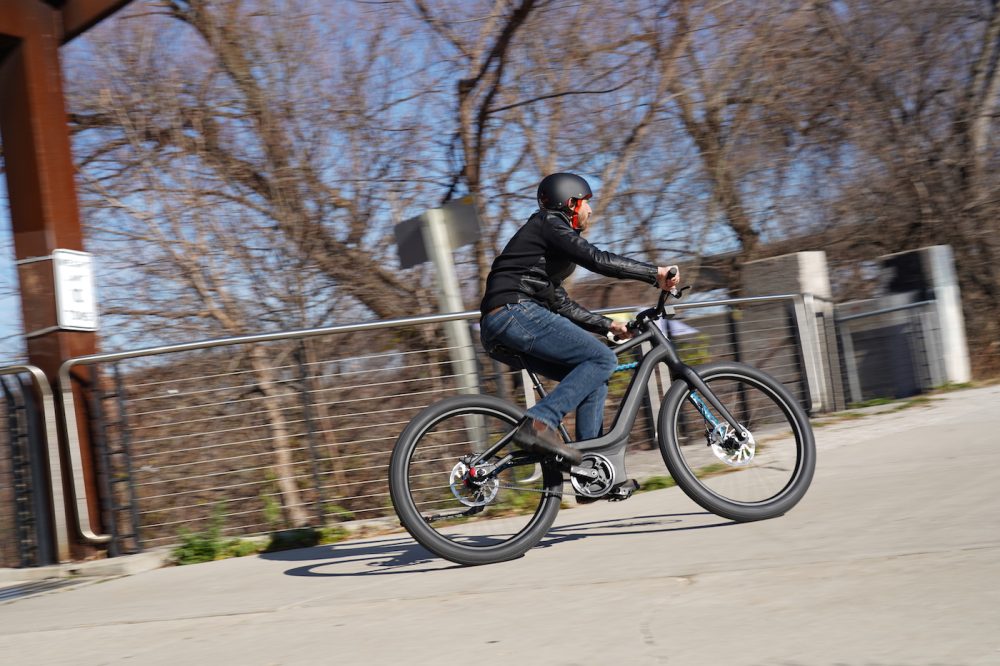
To sum it up: these e-bikes have been through more stringent design and testing than any other e-bike I’ve seen. They’ve taken decades of motorcycle safety, design, and production principles and applied them to the cycling industry.
And when you factor all of that in, the pricing is incredibly competitive:
- MOSH/CTY: $3,399
- RUSH/CTY STEP THRU: $4,399
- RUSH/CTY STEP OVER: $4,499
- RUSH/CTY Speed: $4,999
Those prices also include free shipping, with pre-orders opening today in the US and Germany (more countries to follow).
And when compared to other premium electric bicycles in the space such as those from Specialized and Trek, Serial 1’s prices fall right in line and match those competitors when comparing based on similar component levels, such as the Brose Drive S Mag motors, Gates belt drive, large batteries and Enviolo automatic transmissions. Bikes from other premium manufacturers sporting those parts will cost you just as much.
The difference is you also get all of the extra details from Serial 1, such as the beautifully embedded lighting, the better handling through intelligent frame design and mass centralization, the keyed-alike glovebox/battery/optional bike lock, the lightweight yet more rugged frame design, the attention to detail with safety and convenience, etc.
I really feared that we’d see prices in the $6-7k range, something to compete with premium e-bike companies like Riese & Muller. So a starting price at $3,399 is more than fair here, relative to the components and rest of the industry.
Test riding the Serial 1 electric bikes
Enough shop talk, let’s hear how these e-bikes ride.
Over the course of an afternoon I was able to cover some diverse terrain from city blocks to dirt trails. I climbed hills and skidded across bridges. I asked a lot of the bikes, and they obliged happily.
I have to hand it to Serial 1 and H-D before them; these are excellent riding e-bikes!
They absolutely love to corner. That extra-low center of gravity and the confidence of Schwalbe Super Moto X tires make you want to corner hard, and the bikes simply beg you to do it. The words “nimble” or “agile” just don’t quite do the bikes justice. They’re more than nimble — they almost seem to anticipate your moves. I’m not a frame designer so I can’t claim to understand all of the intricacies that go into creating that feeling, but suffice it to say that Serial 1 knew what they were doing when creating an e-bike that melds effortlessly into the rider.
The single-speed MOSH/CTY is geared appropriately so that it is easy to get rolling (especially with that Brose Drive S Mag motor) yet doesn’t cause you to spin your legs like a food processor at its 20 mph (32 km/h) top speed. And the single-speed setup keeps the weight down at just 48 lb (21.8 kg).
I even blasted through off-road nature trails — something I didn’t expect to feel so good on a bike that Serial 1 describes as an “urban playbike.”
But the MOSH loved it! That powerful motor, strong hydraulic disc brakes on giant 203 mm rotors and balanced frame design helped me hug bends in the trail at high speed, holding lines that I didn’t even think I was capable of.
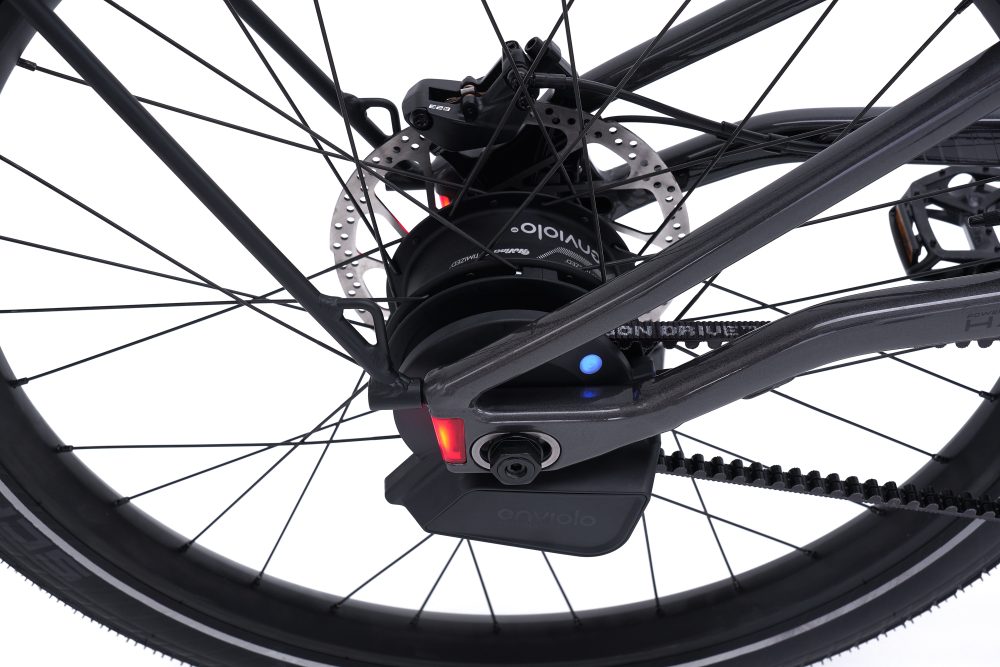
But the real beauty is that automatic transmission on the RUSH models. You can select the cadence that feels right to you, and the transmission constantly adjusts to keep you in the proper gear for your favorite pedaling speed. No shifting, no thinking. It just does it all for you.
The bikes just feel right. They don’t feel like a collection of parts; they feel like a properly designed e-bike that disappears beneath you leaving you with nothing to think about but the ride itself.
Summing it all up
Look, we all heard the jokes when Harley-Davidson first began working on e-bikes. “But how will they make it leak oil in your garage?” “Does it come with a leather jacket and a gray pony tail?” and “If it’s a Harley then will it still cost more than a car?”
Ha. Ha.
But let’s get real. It’s not a Harley. Not anymore. And Serial 1 did a great job with these e-bikes.
Laugh about Harley maintenance all you want, but this ain’t a Harley. Those juice brakes, belt drive, and single-speed or automatic transmissions mean essentially zero maintenance. Check your tire pressure and ride.
And these aren’t chromed-out cruisers. They’re urban e-bikes that both look good and are actually designed to be functional. Their dual racks, fenders and locking glovebox are sweet. These are legit commuter e-bikes.
And they aren’t charging an arm and a leg to get an e-bike with a brand label on it. If anything, the bikes cost the same as the competition yet arguably provide more value.
I think VP of product development Ben Lund said it best when showing me the bikes’ features. “We’re not just badge-slapping here,” he said. “We really mean businesses.”
And he’s right. These aren’t Harley-Davidson e-bikes. They’re well-made Serial 1 e-bikes that happen to have a Harley origin story.
They’ve benefitted from Harley-Davidson’s expertise and resources, but are now charting their own path.
And I love it.
Author: Micah Toll
Source: Electrek



